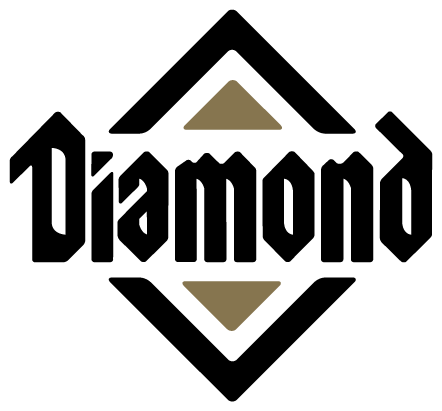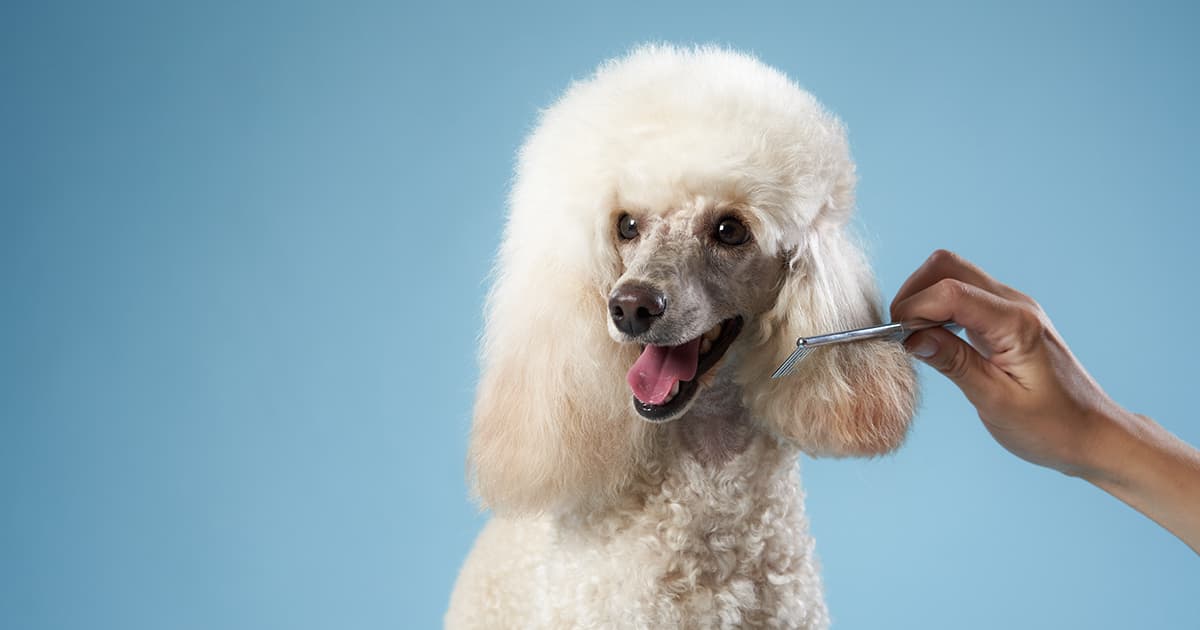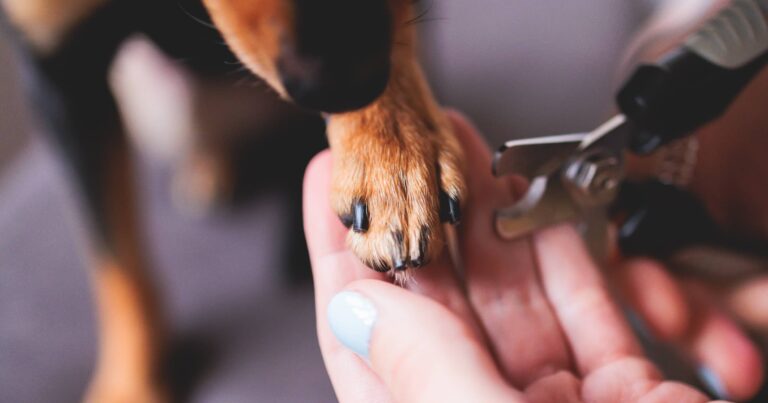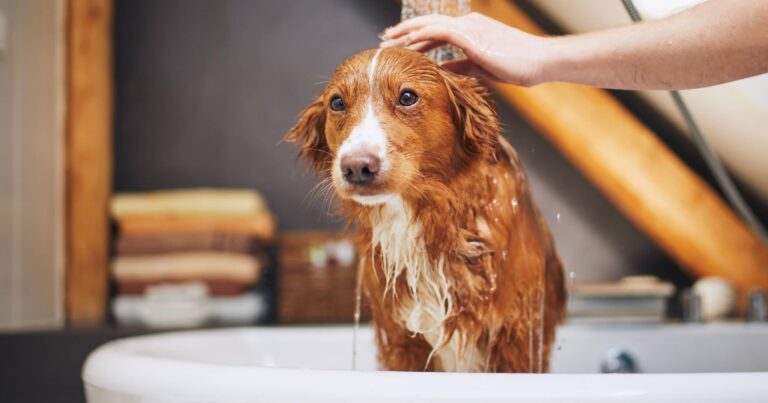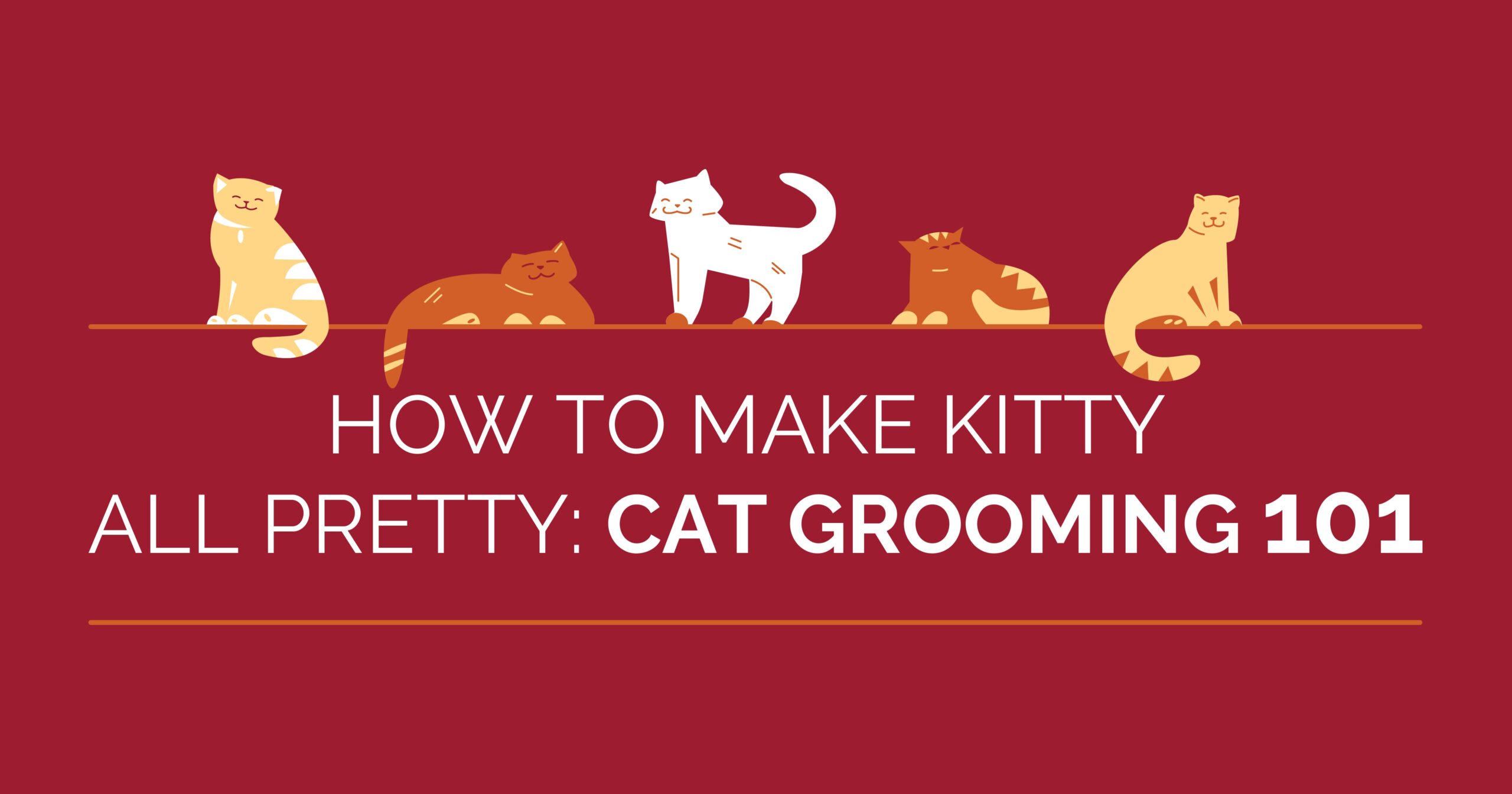Regular grooming is an important part of your dog’s care, and it’s also a great opportunity for you and your dog to bond. If you’re considering grooming your dog at home or would like to do some between-grooming-appointment maintenance, we’ve got some tips to get you started. And here’s one tip before we begin — you may need an extra set of hands.
Dog Grooming Tips for Beginners
The first piece of equipment you need is not a comb, brush or shampoo — it’s treats. Treats will help make grooming a positive experience for your dog, especially if they’re not used to grooming or it has been a while since their last grooming session. Start with short sessions and reward your dog with high-value treats when they remain calm. If they do show signs of stress, stop and try again the next day.
Some of the grooming tools you may need for grooming at home include an undercoat rake, a pin brush, a slicker brush, dog shampoo (not baby or human shampoo) and towels for drying off. Many dogs don’t like having water poured over their heads, so grab cotton balls or a damp cloth to wipe around your dog’s eyes, ears and muzzle. Let your dog sniff these tools before you begin so they’re not trying to do back bends to see what you have in your hand.
How to Groom Your Dog at Home
Brushing helps to remove dirt, dead skin cells, loose hair, tangles and mats. It also helps distribute skin oils which are moisturizing and protective and keep your dog’s coat and skin healthy. Brushing your dog regularly also benefits you, as it means less time vacuuming hair off the couch and lint rolling your clothes before you walk out the door.
It’s important to remove any hair mats first (see the mat section below) before brushing the rest of your dog’s coat. Brush in the direction the hair is growing, and don’t spend too long brushing in one spot because this can cause skin irritation called brush burn.
Generally, brushing dry hair is much easier than wet hair. For some curly-coated breeds like poodles, slight dampness can help prevent breakage. However, it’s best not to use a human hair dryer to blow-dry your dog as it can burn their skin. Instead, use a forced air dryer made specifically for dogs that is a lower temperature and more powerful. A doggy dryer is especially useful for long-haired pups and those with a double coat. Dogs with short, smooth coats probably don’t need a dryer; just rub briskly with a towel to dry their fur.
How to Groom a Dog with Hair Mats
Regular brushing will prevent hair mats from forming. This is particularly important for older or injured pets who can’t reach to groom themselves in all places. Matted hair can pull at your dog’s skin, which can cause pain and irritation.
To remove a mat, hold the hair between the skin and the mat and, using a metal comb, start on the outside and gently pick the mat apart, working toward the center. It’s not recommended to trim hair mats using scissors because you might accidentally cut your dog’s skin. Leave large or difficult mats for a professional groomer or your veterinarian.
How Often Should You Groom Your Dog?
Your dog’s breed and coat type will determine how often your dog needs to be groomed. Most dogs with short hair and no undercoat only need brushing once a week, while dogs with long hair or double coats may need brushing three to four times a week. Dogs with double coats (a soft undercoat with a coarser, longer topcoat) typically shed their undercoats twice a year, in spring and fall. You can help them shed their undercoat by brushing them regularly, perhaps even daily. Removing the undercoat allows air to circulate around the skin, helps the skin stay dry and prevents complications from bites and hot spots.
If your dog needs a more thorough trim with clippers, book an appointment with a professional groomer. Dogs with double coats typically should not be shaved because the topcoat protects their skin from the sun and insects. However, in cases with severe matting or medical issues, shaving may be necessary. For dogs with a single coat, it’s recommended that their hair isn’t clipped shorter than 1 inch for the same reasons.
How Often Should I Bathe My Dog?
Healthy dogs with healthy skin don’t usually need to bathe very often because they can mostly do the job themselves by self-grooming. For these dogs, a bath every few months should be enough, unless, of course, they have rolled in something smelly or jumped in a mud puddle. Dealing with mud is a whole other mess — check out our tips on removing mud from your best bud.
If your dog has trouble grooming themselves, they may need more frequent baths, and longer-haired dogs may need baths every 6 to 8 weeks to keep their hair clean. Dogs with sensitive skin usually need more frequent bathing, some even twice a week and often with a therapeutic shampoo.
Make sure to only use a shampoo designed for dogs, not humans. Dog shampoo has a different pH than human shampoo, which can dry out your dog’s skin. Using warm water will also help prevent their skin from drying out. If your dog has sensitive skin, they may need a sensitive-skin shampoo that is free from soap, fragrance and dye. For some dogs with sensitive skin, veterinarians may recommend a medicated shampoo. And as long as you use the right shampoo for your dog, frequent bathing won’t strip their coat of important natural oils.
Clipping Your Dog’s Nails
If it sounds like your dog is tap dancing on the floorboards, it’s time for a nail trim. If you’re not confident about trimming your dog’s nails, it’s best to leave it to a professional to avoid injury to your dog and added stress for both of you.
If you would like to try trimming your dog’s nails, start by handling each paw (without the clippers). Touch their paw pads, nails and the top of their paws, and reward your dog with praise or a treat when they remain calm. Then touch each paw with the nail trimmer and reward calm behavior. Try trimming a single nail and giving lots of praise and rewards. If that goes well, progress to more and more nails. If nail trimming is not going well and is stressful for your dog (and you), leave it to a professional.
When cutting your dog’s nails, it’s important to avoid the quick — the pink area visible in the middle of light-colored nails. If your dog has dark-colored nails, make small trims until you see a black dot in the center of the nail: this means you’re close to the quick. If you do accidentally cut the quick, pat the nail with styptic powder or cornstarch.
Clean Teeth Are Important, Too
Regular brushing of a dog’s teeth should also be an item on the to-do list of a dog owner. Many dogs won’t be a fan of tooth brushing at first, but by taking small steps each day, you can eventually get them used to brushing their teeth to remove harmful plaque and tartar.
Skip the Ear Cleaning
A dog’s ears are usually on the list of things not to clean. Dogs have a self-cleaning feature for their ears called epithelial migration. The skin in the ear canal gradually migrates outwards from the tympanic membrane, carrying excess debris with it along the way. So if your dog’s ears aren’t bothering them, it’s best to leave them alone. If your dog does need to have their ears cleaned due to allergies or an infection, your veterinarian can show you how to do it safely.
It may take your dog a while to get used to the grooming process, but with plenty of rewards and praise, hopefully grooming will become something both you and your dog look forward to. And remember, there are always professionals to call on if grooming at home doesn’t work out.
